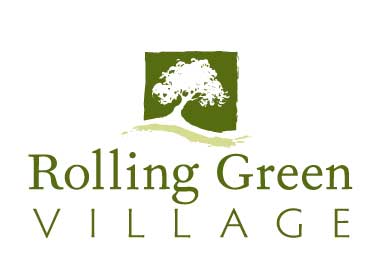 There are few things more universal to the human experience than music. From childhood to old age, it has the power to inspire and unite us. Regardless of our unique life circumstances, each individual has memories connected to their favorite songs. But your favorite music is much more than just a soundtrack – science shows that music and dancing hold significant benefits for your health. Read on to find out how music for seniors and music-related activities for seniors can make a positive difference in their lives.
There are few things more universal to the human experience than music. From childhood to old age, it has the power to inspire and unite us. Regardless of our unique life circumstances, each individual has memories connected to their favorite songs. But your favorite music is much more than just a soundtrack – science shows that music and dancing hold significant benefits for your health. Read on to find out how music for seniors and music-related activities for seniors can make a positive difference in their lives.
Melodies and Brain Health
Music can trigger some potent psychological benefits. Seniors who regularly listen to music tend to have a sunnier outlook on life and stronger social networks. They also report lower levels of stress and are prescribed anti-anxiety medication much less often. Music may even act as a jumpstart to activate or improve brain function.
Music therapy for Alzheimer’s and dementia patients is a proven way to reawaken memory. Even in cases where the patient is fully nonverbal, individuals may be able to recall the lyrics to their favorite songs. One explanation is that the part of the brain that processes music, the auditory cortex, is connected to the limbic system, where emotions are processed. The limbic system is one of the last areas of the brain to be affected by Alzheimer’s.
In many situations, music therapy is more powerful than traditional rehabilitation methods. A study conducted on Finnish stroke survivors found that listening to their favorite music while recovering helped them recognize words and regain their ability to communicate faster than nonlisteners. Compared with those in traditional recovery, music listeners were much less likely to be depressed and confused, alleviating two of the most common poststroke side effects.
Older adults who enjoy good health can also benefit from music therapy, especially active music therapy. Here are a few music therapy ideas for seniors to get you started:
- Oldies but goodies – Listen to popular music from your past with others in your age group. It can spark shared memories and serve as a talking point for experiences you have in common.
- I got rhythm – Drum circles, handbell choirs or playing any rhythm instrument can be a fun group activity. If you don’t have any instruments handy, play rhythms with body sounds, like clapping or knee patting. Say a name aloud in rhythm and then clap the rhythm of the name in response. Find a rhythm for each participant’s name.
- Walk this way – If your gait isn’t what it should be, try rhythmic walking to improve your gait. You can also use music to improve range of motion, flexibility, strength and endurance when exercising.
Get in the Groove
It’s no secret that music encourages you to move. Who hasn’t put in their earbuds and turned up the music to get them going on an exercise bike or treadmill? Dancing to music is a wonderful form of exercise for older adults. It can be done anywhere and requires no practice or extra equipment. It can even improve your motor skills. All you need to do to reap the health benefits of dance is drop the needle on your favorite tunes, get up and groove.
According to AgingCare, a few weeks of salsa dance classes can give older adults a serious boost in strength and balance. Seniors with chronic heart issues may derive the same benefit from learning to dance a waltz as they would from cycling or walking. Additionally, those with knee and hip pain may have their discomfort alleviated by participating in dance classes.
When it comes to dance, you don’t need to take classes to see noticeable effects. Compared with other leisure activities, dancing seems to offer the best chance of staving off dementia and other neurodegenerative conditions. And don’t worry about working up a sweat – senior workout music can be anything from swing to crooning to classical, so pick music that moves you. Experts theorize that dance combines regular cardiovascular exercise with a brain workout – each step requires a split-second decision that builds new neural pathways and helps keep your mind sharp.
Say Goodbye to the Jukebox
As the millennials in your life may have informed you, physical media is quickly going the way of the dodo. While it’s still possible to find most music on CD or vinyl, online music streaming services make finding and listening to your favorite music easier than ever. Here’s a quick breakdown of the benefits of music streaming:
- Convenience. If you’ve ever wanted to hear a song only to find that you don’t have it on a record or disk, this should appeal to you. Streaming provides instant access at the touch of a button.
- A massive Library. Most streaming services nowadays have immense libraries that are searchable by artist, album, year of release, song title and even lyrics. It would take a long time and a lot of money to build a collection that could come close.
- New music discovery. The main music streaming services, like those offered by Apple, Google or Spotify, each have algorithms designed to interpret your tastes and preferences and then match you with artists you may like. It’s not a perfect system, but it beats the days of buying a record before you knew if it was any good.
There are literally dozens of competing music streaming services out there – let’s focus on two that are available on almost any device: YouTube and Spotify.
YouTube
- While YouTube is mostly known as a video streaming service, their mobile app and website can be great for listening to music.
- It’s visual. YouTube has a plethora of music videos and concert recordings, allowing you to see your favorite artists perform long after their touring days were over.
- High variety. Everything on YouTube is uploaded by users like you, which gives viewers access to content that other streaming services can’t provide – you’ll see cover versions of famous songs as interpreted by smaller acts, bedroom musicians trying to make a splash, and all sorts of interesting music reviews and analysis.
Spotify
- The gold standard. Spotify’s playlist feature is superior to YouTube, and what it lacks in video content is supplemented by significantly higher standards for sound quality.
- Consistency is key. Music is submitted by artists and record labels, giving Spotify much tighter control over what ends up on the platform. That means less variety in types of content, but it also means a more effective search and music discovery system.
While YouTube and Spotify both offer ad-free paid subscriptions on top of their regular music streaming services, you can easily use both without spending a dime. And regardless of which service you choose, you’ll have access to millions of songs at your leisure. In addition to being available on desktop and laptop computers, both services offer apps on iPhone and Android devices. Simply download the app and start enjoying the music you love.
Interested in a playlist of exercise music for seniors? We handpicked a selection of chart-toppers from the 40s, 50s and 60s. Pick your favorite hit and boogie; it’s good for you! Check out the playlist here.
For more music therapy ideas for the elderly, have a look at the list of links and resources below.
http://www.musicforseniors.org/
https://dailycaring.com/music-seniors-love-top-songs-from-every-generation/
https://www.goldencarers.com/free-music-playlists-for-the-elderly/4298/
https://www.agingcare.com/articles/music-as-medicine-for-seniors-156581.htm
https://www.agingcare.com/articles/health-benefits-of-dancing-170535.htm



